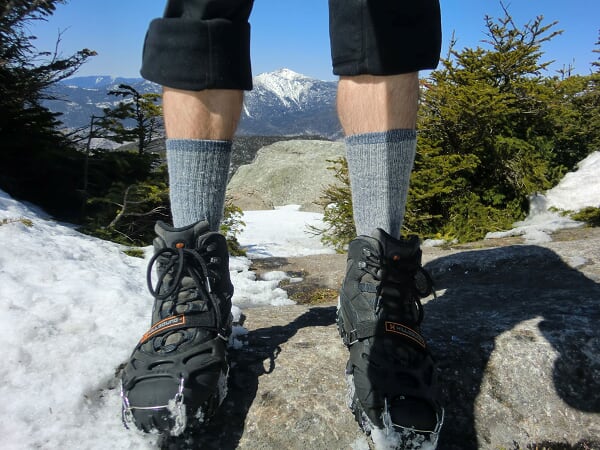ksearl
Active member
Okay, so a couple weekends back, I hiked South Moat (VFTT thread here), and used my Kahtoola Microspikes for the first time. Let me first say...they are one of the best investments I have ever made. What great traction they provide on packed down, icy and snowy trails...they are amazing!
My question, however, is how often do you pull them off and then put them back on...or at least what terrain? I noticed a lot of people wore them straight through, even when the trail was bare. I was worried I would hurt them (they are brand new), so I kept removing them when the snow went away and putting them back on when the snow showed back up. As you can imagine, it was a total pain in the neck and tiring with a full pack on.
Does anyone have a rule of thumb as to when you do take them off? Or does everyone pretty much where them throughout the whole hike if snow is present in different locations? What about ledge areas? I would assume the spikes dull quickly over this type of terrain...
Just curious and thanks in advance for your responses!
Karl

Took this snapshot of my new Kahtoolas on the trail.
My question, however, is how often do you pull them off and then put them back on...or at least what terrain? I noticed a lot of people wore them straight through, even when the trail was bare. I was worried I would hurt them (they are brand new), so I kept removing them when the snow went away and putting them back on when the snow showed back up. As you can imagine, it was a total pain in the neck and tiring with a full pack on.
Does anyone have a rule of thumb as to when you do take them off? Or does everyone pretty much where them throughout the whole hike if snow is present in different locations? What about ledge areas? I would assume the spikes dull quickly over this type of terrain...
Just curious and thanks in advance for your responses!
Karl

Took this snapshot of my new Kahtoolas on the trail.

